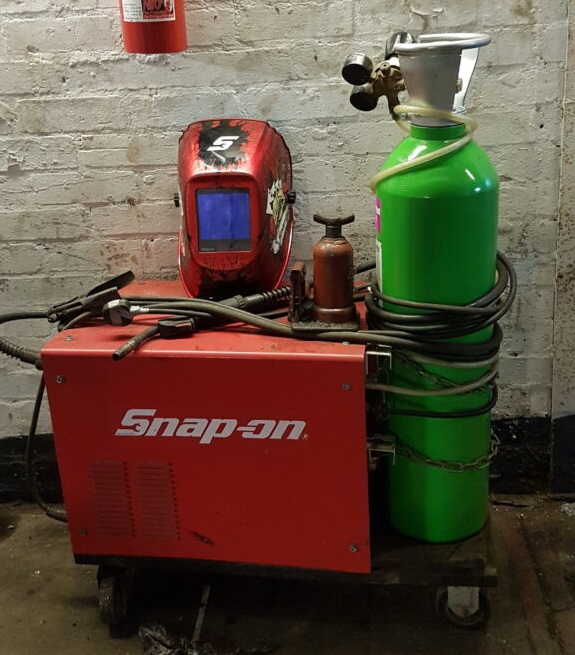
Welding is a fabrication process that involves melting and fusing metal together to create a permanent bond. In the context of automotive repair, welding is often used to repair damaged car bodies and parts, or to fabricate custom parts. There are several different welding techniques that can be used on cars, including MIG welding, TIG welding, and spot welding. Each technique has its own advantages and disadvantages, and the appropriate technique will depend on the specific repair or fabrication task at hand.
- MIG (Metal Inert Gas) welding, also known as GMAW (Gas Metal Arc Welding), is a process that uses a wire welding electrode on a spool that is fed through a welding gun. An electric current is used to create an arc between the electrode and the metal being welded, melting the metal and fusing it together. MIG welding is fast, easy to learn, and produces strong, high-quality welds. It is often used for welding thin sheets of metal, such as those found on car bodies.
- TIG (Tungsten Inert Gas) welding, also known as GTAW (Gas Tungsten Arc Welding), is a process that uses a tungsten electrode to produce an arc that melts the metal being welded. TIG welding is a more advanced technique that requires more skill to master, but it is capable of producing high-quality, visually appealing welds. It is often used for welding thin sheets of metal and for welding stainless steel.
- Spot welding is a process that uses two electrodes to apply pressure and an electric current to a small spot on a piece of metal, causing the metal to melt and fuse together. Spot welding is often used to weld together the panels on a car body, as it is fast and produces strong welds.
There are other welding techniques that are less commonly used in automotive repair, such as arc welding and oxyfuel welding. It’s also worth noting that welding requires specialized equipment and safety
